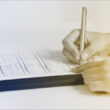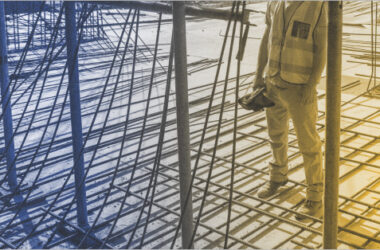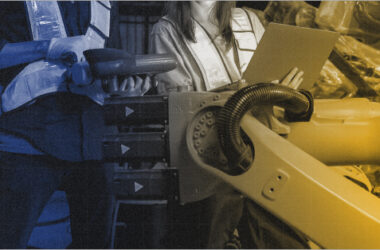Are you a business owner looking to protect your company against unexpected risks and losses? If so, then you need to consider buying Erection All Risk (EAR) Insurance. This type of insurance provides comprehensive coverage for projects involving the erection, installation, or commissioning of machinery, equipment, or structures. EAR Insurance safeguards your business from potential damages, such as fire, natural disasters, theft, and equipment malfunctions. In this article, we will guide you through everything you need to know about buying EAR Insurance for your business. You will also learn about the various factors that can influence the premium of an EAR Insurance Policy.
Stay tuned then!
Understanding Erection All Risk Insurance
The EAR Insurance Policy is a specialised form of coverage tailored to protect businesses engaged in construction projects involving erection, installation, or commissioning of machinery and structures. It is essential for contractors, engineers, and project owners who face multiple risks during the construction process. The primary purpose of EAR Insurance is to provide financial protection against sudden and unforeseen loss or damage, ensuring projects can proceed smoothly without financial strain.
One of the defining features of an EAR Policy is its comprehensive nature, covering not just the physical assets being erected but also potential third-party liabilities. This includes damages to third-party property and injuries caused by project activities. The policy also offers coverage for accidental damages occurring during erection, testing, and commissioning phases, which is crucial for businesses dealing with complex installations and heavy machinery.
Steps to Buying EAR Insurance for Your Business
When buying an EAR Policy for your business in India, it’s important to ensure you secure comprehensive coverage tailored to your needs. Here are the key steps to follow while purchasing EAR Insurance:
1. Understand Your Coverage Needs
- Identify Project Scope: Assess the nature and scale of your erection or installation project, including equipment, machinery, and duration.
- Evaluate Risk Exposure: Consider potential risks such as fire, theft, natural disasters (earthquakes, floods), and human errors during installation.
- Determine Additional Coverage: Decide if you need add-ons like third-party liability, debris removal, maintenance coverage, or transit coverage.
2. Research Insurance Providers
- Compare Multiple Insurers: Look for insurers specializing in EAR policies with experience in handling similar projects.
- Check Reputation: Review the insurer’s claim settlement ratio, customer reviews, and financial stability.
- Understand Market Offerings: Some insurers offer customised EAR policies with better terms for specific industries.
3. Customise Your Policy
- Sum Insured: Ensure the policy covers the full value of your machinery, including installation, testing, and commissioning costs.
- Policy Period: Match the coverage period with the timeline of your project, from transit to commissioning.
- Add-On Covers: Consider endorsements such as:
- Clearance and debris removal costs.
- Escalation costs due to inflation during the policy period.
- Coverage for tools and equipment used in the erection process.
- Maintenance coverage post-installation.
4. Understand Exclusions
Review the list of exclusions, including:
- Pre-existing damage.
- Normal wear and tear.
- Design defects or poor workmanship.
- Nuclear risks, war, and terrorism-related damages.
- Acts of willful negligence.
5. Analyse Policy Premium Costs
- Breakdown of Costs: Understand the premium computation, including base premium and add-ons.
- Factors Influencing Premiums:
- Nature and size of the project.
- Type of machinery or equipment.
- Location and environmental risks.
- Safety measures and risk management protocols in place.
- Request Quotes: Get estimates from multiple insurers to compare coverage and pricing.
6. Review Policy Terms
- Coverage Limits: Confirm the maximum limits for various claims.
- Deductibles: Understand the amount you need to bear before the insurer pays.
- Policy Wording: Read the fine print to avoid surprises during claims.
7. Seek Expert Advice
- Consult Brokers: Insurance brokers can help tailor the policy to your specific project and negotiate better terms.
- Leverage Expertise: Work with advisors who specialise in EAR Insurance policies.
8. Verify Documentation
- Proposal Form: Accurately fill out the form with all project details.
- Supporting Documents: Provide essential documentation, including:
- Project details and timelines.
- Equipment and machinery specifications.
- Risk assessment reports.
- Certificate of Insurance: Ensure all terms, conditions, and endorsements are clearly stated in the policy document.
9. Monitor the Claims Process
- Understand the Claims Process: Familiarise yourself with the insurer’s requirements and timelines.
- Proper Documentation: Keep records of incidents, including photographs, reports, and invoices, to ensure smooth claims processing.
- Timely Notification: Report claims within the stipulated timeframe to avoid claim rejection.
10. Periodic Review and Renewal
- Regular Policy Review: Ensure your coverage remains adequate for ongoing and future projects.
- Update Insurer on Changes: Notify your provider about significant project modifications or extensions.
By following these steps, you can secure a robust EAR Insurance Policy tailored to safeguard your business against potential erection-related risks.
Cost of EAR Insurance and Factors That Affect It
The cost of an EAR Insurance Policy in India is influenced by multiple factors. Understanding these can help you estimate premiums and negotiate effectively with insurers. Key factors that can influence EAR Insurance Premiums are:
- Project Scope and Value: Larger projects with higher insured values attract higher premiums.
- Type of Equipment and Machinery: High-value or complex machinery requires higher coverage.
- Nature of the Project: Industries like oil and gas or power plants have higher risks, leading to increased premiums.
- Project Location: Projects in disaster-prone or remote locations have higher costs.
- Policy Coverage: More comprehensive policies with multiple add-ons increase premiums.
- Add-On Covers: Extensions like debris removal, maintenance coverage, or transit coverage impact costs.
- Risk Management Practices: Strong safety measures can lower premiums.
- Deductibles: Opting for higher deductibles reduces premium costs.
- Type of Policy: Tailored policies may be more expensive than standard plans.
- Insurer’s Risk Assessment: Different insurers assess risks differently, leading to varied pricing.
- Economic Factors: Inflation and taxation (e.g., GST in India) impact overall premium costs.
- Industry Claims History: Frequent claims in an industry can raise premiums across the sector.
By managing some of these factors effectively, you can optimize the cost of your EAR Insurance Policy.
Final Thoughts
EAR Insurance is an invaluable asset for businesses involved in construction and installation projects. By understanding its importance, the types of risks covered, and the factors to consider when purchasing, business owners can make informed decisions that safeguard their investments and operations. As you embark on the journey of obtaining EAR Insurance, remember the key steps involved—from assessing your risks to finding the right provider. Ultimately, protecting your business with EAR Insurance is not just a prudent financial decision; it is a vital component of a comprehensive risk management strategy.








